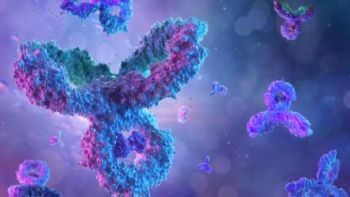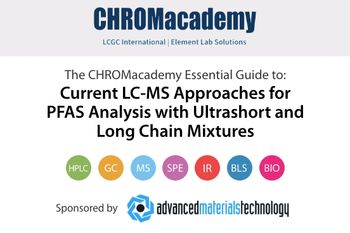
Top 10 LCGC Articles of the Month: Highlighting Diverse Topics in Separation Science
A list of the Top 10 LCGC Articles of the Month: Highlighting Diverse Topics in Separation Science
We’re kicking off a brand-new monthly tradition! Each month, the editors of LCGC International will select the Top 10 must-read articles based on reader interest, content quality, and editorial review. These selections highlight some of the most exciting developments and insights in separation science.
This month, we’ve curated a mix of recent standouts and a few timeless gems from past issues. This month’s lineup spans a broad range of topics, including internal standards, bridging the gap between gas chromatography (GC) and liquid chromatography (LC) communities, cutting-edge advances in two-dimensional liquid chromatography-mass spectrometry (2D-LC–MS), multidimensional liquid chromatography-mass spectrometry (mD-LC–MS), updates on USP <621>, electrospray ionization liquid chromatography-mass spectrometry (ESI-LC–MS), RNA oligonucleotide mapping, supercritical fluid chromatography (SFC), molecularly imprinted polymers (MIPs), proteomics, and more.
At LCGC International, we cover the full spectrum of analytical chemistry techniques—liquid and gas chromatography, mass spectrometry, capillary electrophoresis, supercritical fluid chromatography, and all the data integration that ties it together.
Stay tuned monthly as we highlight the most compelling articles shaping the field.
Now, let’s dive in!
This Oldie but Goodie article explores an important topic: the role of internal standards (IS) in liquid chromatography (LC) and how they impact data quality. It discusses how IS can correct variability in sample preparation, injection volume, and instrumental response by normalizing analyte signals relative to a known standard. The author addresses common misconceptions and practical considerations for choosing an IS, such as chemical similarity to the analyte, matrix compatibility, and response consistency. The discussion also highlights when IS calibration is beneficial versus when external standardization may suffice (1).
This thought-provoking blog reflects on the division between GC and LC communities, emphasizing the need for a more integrated perspective on separation science. The author discusses their transition from comprehensive two-dimensional gas chromatography time-of-flight mass spectrometry (GC×GC–TOFMS) to liquid chromatography-tandem mass spectrometry (LC–MS/MS) research and the unexpected resistance they encountered. The piece argues that both techniques share fundamental chromatographic principles and should be viewed as complementary rather than competitive. The article calls for a unified approach to training and research that bridges the gap between GC and LC to advance the field as a whole (2).
A two-dimensional liquid chromatography (LC×LC) method is coupled with mass spectrometry (MS) for detailed glycosylation profiling of recombinant human acid α-glucosidase (rhGAA), a therapeutic enzyme. The approach employs reversed-phase LC (RPLC) at high and low pH for multidimensional separation of glycopeptides, enabling enhanced resolution of glycoforms. MS in all-ion fragmentation mode allows for precise identification of glycopeptides. The research compares CHO-cell-derived and glyco-engineered yeast-derived rhGAA, demonstrating how LC×LC–MS improves glycosylation characterization critical to therapeutic efficacy (3).
United States Pharmacopoeia (USP) general chapter <621> on chromatography is examined, which will take effect on May 1, 2025. This article discusses revisions to parameters such as system suitability requirements, adjustments for column selectivity, and modifications in permitted deviations for high-performance liquid chromatography HPLC method conditions. The author emphasizes how these changes may impact pharmaceutical laboratories, requiring method re-validation and compliance updates to ensure continued regulatory adherence. Key considerations for implementation are outlined to assist in transition planning (4).
Here the authors highlight how multidimensional liquid chromatography-mass spectrometry (mD-LC–MS) is revolutionizing therapeutic antibody analysis. As biopharmaceuticals become more complex, traditional chromatographic methods struggle with peak resolution and structural characterization. mD-LC–MS enhances antibody profiling by enabling more precise peak deconvolution, rapid detection of post-translational modifications, and improved quantitation of critical quality attributes (CQAs). The discussion focuses on the benefits of multidimensional separations for optimizing workflow efficiency, reducing sample modifications, and ensuring robust analytical performance in regulatory environments (5).
This blog provides practical guidelines for optimizing electrospray ionization (ESI) in LC–MS applications. Key recommendations include optimizing solvent composition, adjusting flow rates for ionization efficiency, and controlling mobile phase additives to enhance signal stability. The author also highlights strategies to minimize matrix effects, prevent ion suppression, and improve reproducibility. This collection of best practices serves as a valuable reference for both novice and experienced LC–MS users seeking to refine their analytical techniques (6).
This study focuses on the role of enzymatic digestion in mass spectrometry-based RNA oligonucleotide mapping for gene therapy applications. The research evaluates four enzymes—RNase T1, RNase 4, Cusativin, and MC1—for their effectiveness in digesting single guide RNA (sgRNA) and messenger RNA (mRNA) of varying lengths. The impact of missed cleavages and the influence of shorter oligonucleotide fragments on sequence coverage are analyzed using bioinformatics tools. The findings support the application of oligonucleotide mapping for regulatory-compliant analysis of RNA therapeutics, similar to peptide mapping in protein characterization (7).
The authors of this article discuss the implementation of SFC as a robust analytical method for pharmaceutical R&D and commercialization. SFC is particularly advantageous for chiral separations, hydrophobic compounds, and analytes sensitive to aqueous environments. The discussion covers method development, validation, and transition to quality control (QC) workflows, emphasizing SFC’s benefits in terms of speed, selectivity, and sustainability. The article also highlights industry trends favoring green analytical methodologies and the regulatory considerations for integrating SFC into routine pharmaceutical analysis (8).
This article explores the growing role of molecularly imprinted polymers (MIPs) in sample preparation for chromatography. Initially introduced for solid-phase extraction (SPE), MIPs now support a range of techniques, including microextraction, monolithic phases, and stir bar sorptive extraction. MIPs offer high selectivity, stability, and cost-effectiveness compared to biological receptors. The discussion highlights recent advancements in MIP synthesis and their applications in analytical workflows, demonstrating their expanding role in improving separation science methodologies (9).
This review covers mass spectrometry-based proteomics techniques for protein biomarker quantification in clinical diagnostics. The discussion covers label-free and stable isotope labeling approaches for detecting low-abundance proteins, including SILAC, iTRAQ, and tandem mass tags (TMT). The article emphasizes the role of enrichment techniques in overcoming challenges related to post-translational modifications (PTMs) and biological matrix complexity. By enhancing specificity and sensitivity, LC–MS-based proteomics is advancing biomarker discovery for disease prognosis and therapeutic monitoring (10).
References
(1) Dolan, J. W. When Should an Internal Standard Be Used? 2012, LCGC N. Am., 30 (6), 474–480.
(2) Cain, C. N. The LCGC Blog: Reunifying Separation Science. 2025, LCGC N. Am.
(3) Sandra, K.; Piens, K. Detailed Glycosylation Analysis of Therapeutic Enzymes Using Comprehensive 2D-LC–MS. 2024, LCGC Int., 1 (9), 30–34. DOI: 10.56530/lcgc.int.qn1778b9.
(4) Smith, P.; McDowall, R. D. Are You Sure You Understand USP <621>? 2024, LCGC Int., 1 (8), 22–30.
(5) Heinrich, K.; Özipek, S. The Role of mD-LC–MS for Antibody Analysis in the Biopharmaceutical Industry. 2025, LCGC Suppl., Adv. Biopharm. Anal., 4–10.
(6) Taylor, T. The LCGC Blog: 10 Great Tips for Electrospray Ionization LC–MS. 2020, The Column, 16 (12), 26–34.
(7) Menneteau, T.; Addepalli, B. Advancing Gene Therapy: Enzyme Selection for Effective RNA Oligonucleotide Mapping. 2025, LCGC Suppl., Adv. Biopharm. Anal., 20–25.
(8) Brunelli, C.; Callar, W. Analytical Method Lifecycle of SFC Methods from Development Use to Routine QC Implementation: Supporting Small Molecule R&D and Commercialization. 2024, LCGC Int., 1 (10), 22–27.
(9) McNally, M. E. P. Sample Preparation with Molecularly Imprinted Polymers (MIPs). 2024, LCGC Int., 1 (10), 18–21.
(10) Auclair, J.; Kaur, A. LC–MS-Based Proteomics for Protein Biomarker Quantification for Both Prognosis and Diagnosis in the Clinical Setting. 2024, LCGC Int., 1 (10), 12–17.
Newsletter
Join the global community of analytical scientists who trust LCGC for insights on the latest techniques, trends, and expert solutions in chromatography.





